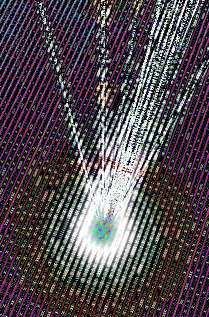Mirror sandwich feeds excitons
 Australian engineers have come up with a high-tech ‘sandwich’ for the next generation of electronics.
Australian engineers have come up with a high-tech ‘sandwich’ for the next generation of electronics.
A new report details a ‘sandwich-style’ fabrication process developed by Australian researchers.
The design includes placing a semiconductor only one atom thin between two mirrors, and could be a significant step towards ultra-low energy electronics based on the light-matter hybrid particles exciton-polaritons.
Conventional electronics relies on flowing electrons, or ‘holes’ (a hole is the absence of an electron, i.e. a positively-charged quasiparticle).
However, a major field of future electronics focuses instead on use of excitons (an electron bound to a hole) because, in principle, they could flow in a semiconductor without losing energy by forming a collective superfluid state.
The recent breakthrough, led by the Australian National University, demonstrated robust, dissipationless propagation of an exciton mixed with light bouncing between the high-quality mirrors.
Atomically-thin semiconductors are a promising class of materials for low-energy applications such as novel transistors and sensors, but because they are so thin, their properties, including the flow of excitons, are strongly affected by disorder or imperfections, which can be introduced during fabrication.
The ANU-led international team has coupled the excitons in an atomically-thin material to light - demonstrating for the first time long-range propagation without any dissipation of energy, at room temperature.
When an exciton (matter) binds with a photon (light), it forms a new hybrid particle – an exciton-polariton. Trapping light between two parallel high-quality mirrors in an optical microcavity allows this to happen.
In the new study, the new ‘sandwich-style’ fabrication process for the optical microcavity allowed the researchers to minimise damage to the atomically-thin semiconductor and to maximise the interaction between the excitons and the photons.
The exciton-polaritons formed in this structure were able to propagate without energy dissipation across tens of micrometres, the typical scale of an electronic microchip.








 Print
Print